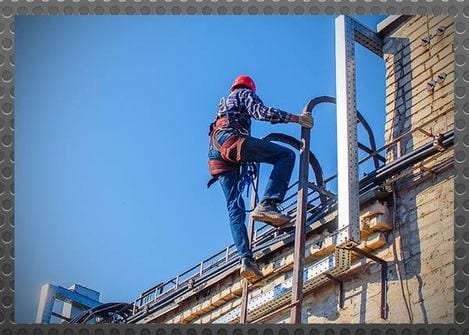- About Us
- Our Services
- Training Expertise
- Crisis Management for Business & Industry
- DOT PHMSA ALERT Rail Car Training
- Emergency Management
- Environmental & HAZMAT
- First Response & HAZWOPER
- Maritime Security
- OSHA Training/Confined Space
- RDPC
- Safer News Gathering
- Safer Ohio Schools Using Threat Assessment Management
- School Safety & Security
- Workplace Violence Prevention
- Courses
- Our Clients
- Media
Fall Protection Training Climbs the OSHA Top Ten Chart

At last month’s National Safety Congress, OSHA announced its Top 10 Most Cited Violations for the fiscal year ending 2017. This year’s list is very consistent with the Top Tens for the last few years with Fall Protection (29 CFR 1926.501) ranked as the most common citation category. This has been the case since at least 2012 and may be one of the reasons that Fall Protection regulations were recently expanded and then enforced in phases throughout this year, as we discussed two weeks ago.
The remainder of the list includes Hazard Communication at number two, with citations typically imposed for failure to maintain a hazard communication program or safety data sheets. Haz-Comm is followed by Scaffolding at number three, and Respiratory Protection in the fourth spot. This category may rise in position in the future, thanks to new silica protection rules in 2017.
Lockout/Tagout violations, including those businesses cited for inadequate worker training in this regard, were ranked as the fifth most common breach of OSHA regulations. That category was followed by improper use of ladders and other similar oversights under the heading Ladders In Construction.
The next most common classifications of violation were those found within the regulations that govern Powered Industrial Trucks (again, most often owing to inadequate training), and Machine Guarding was number eight on the list. Most of the OSHA citations given to companies who experienced accidents in that last class can be credited to worker exposure to dangerous points of operation.
The final kind of citation on this year’s list was Electrical – Wiring Methods, as has been the case since 2014.
But the new entry for 2017 was just ahead of the Electrical classification, “entering the chart”, as they say, at number nine. That spot was occupied by violations of 29 CFR 1926.503, or Fall Protection – Training Requirements. This kind of violation is not found in OSHA’s Top Ten anytime in the previous five years.
This should alert organizations of all types that there is now a serious emphasis on the part of the federal government to ensure workers understand the tools and practices that are used in the prevention of falls. Notice that these citations are appearing in the fiscal year that started in 2016, so companies are being found lacking even before all of the latest regulations in the Fall Protection category are enforceable (the last of these takes effect on November 18, 2017).
For example, the pertinent section of Part 1926 says, “The employer shall provide a training program for each employee who might be exposed to fall hazards. The program shall enable each employee to recognize the hazards of falling and shall train each employee in the procedures to be followed in order to minimize these hazards.” And while 29 CFR 1926 is dedicated to the construction industry, the updated Fall Protection regulations are for General Industry. So, the kind of citations handed out in the last year that might have been attributed to the lack of knowledge of workers at building sites might soon be found in manufacturing, distribution, or other industries.
